Sulaiman-Too
Sulaiman-Too mountain
The sacred mountain of Sulaiman Too (also known as the Solomon’s Throne) is the main attraction of Osh and stands almost at the center of of the city. The mountain was formally called Kara-Bukh till 16th century but with the spread of Islam it has since gotten associated with the name of Prophet Sulaiman (Solomon). Sulaiman-Too mountain has been listed as a UNESCO world heritage site since 2009. The mountain has several caves, grottoes and peculiar rock formations.
Sulaiman mount is believed to be a sacred place and is therefore filled with amazing legends and places of prayer, including its mystical caves. The caves on Sulaiman-Too bear the ancient legends and folk stories. Almost every meter of the limestone-marble walls of the caves and grottoes hold a piece of the history of the mountain.
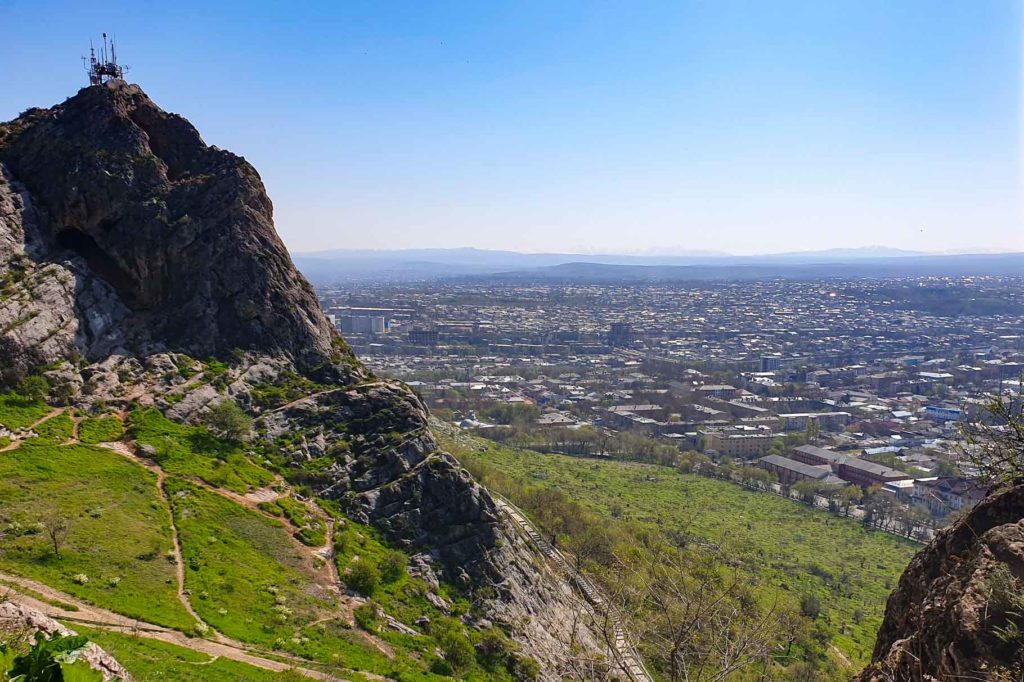
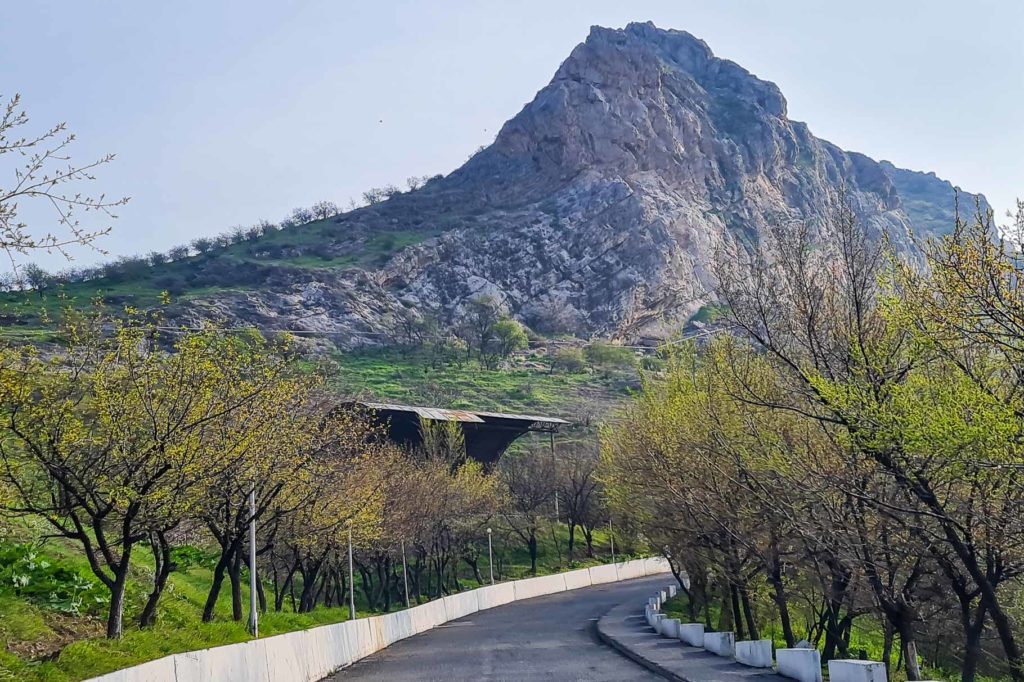
This unique and exciting creation of nature has a five-domed limestone outlier, stretching from west to east, standing out from the otherwise mostly flat Osh city area. Its length is more than 1140 m, width – 560 m and it covers an area of 122 hectares. Rather than a mountain, Sulaiman Too is actually an about 200-meter high hill located in the west-northwest side of the Osh city center.
The mountain can be seen from far away all around Osh and has been a landmark for travelers in the region. It can be easily reached on foot, though you might enjoy a taxi more, especially during the hot summer season as there will be enough walking in the hill area anyway with considerable amount of stairs and height differences.
Sulaiman-Too History
The name Sulamain refers to an Arabic legend that says that the prophet Suleiman stayed on this mountain. In the 19th century, it became a holy place for the Muslims and was renown even abroad as a place for worship and curing. Later, scientific expeditions were sent to study the legends, rites and history of its rocks, caves and crevasses. The link between Sulaiman Too and Islam is undeniable today, but experts consider that it was a holy place already during the Bronze age and there are proof of the mountain edge being inhabited already thousands of years ago.
During the Soviet Union, authorities tried to ban all religious practices on Sulaiman Too and turned it into a secular hiking place. They destroyed several sacred places and installed a panoramic observation platform at its top and a restaurant in the natural cave of Rusha-Unkur. Later it was transformed into a museum. However, Suleiman Too still welcomes many religious pilgrims with 17 active ritual sites.
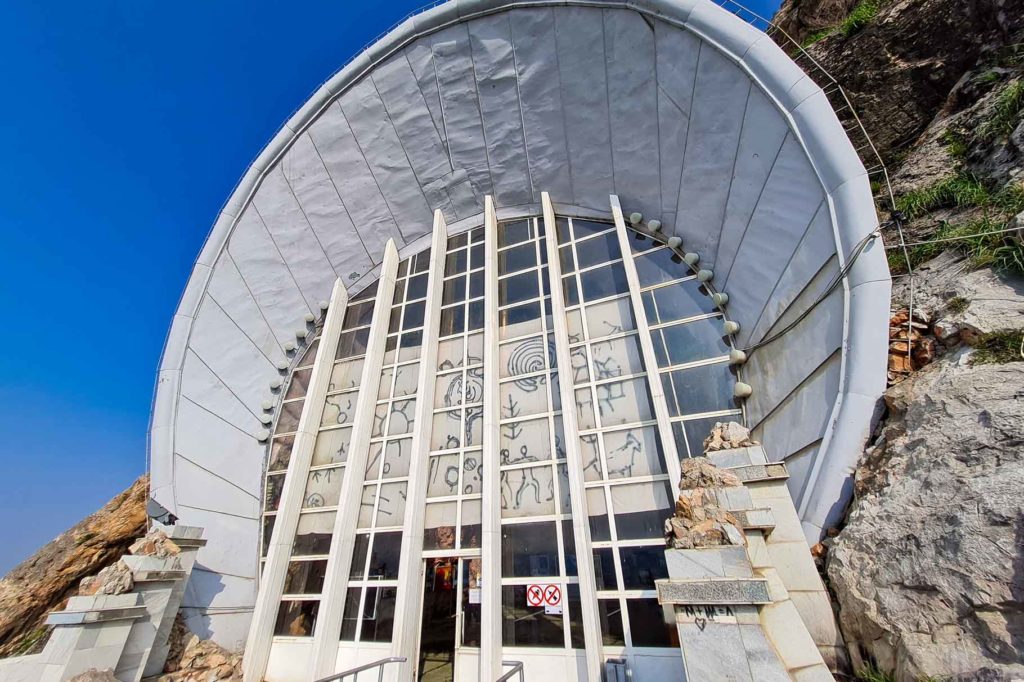
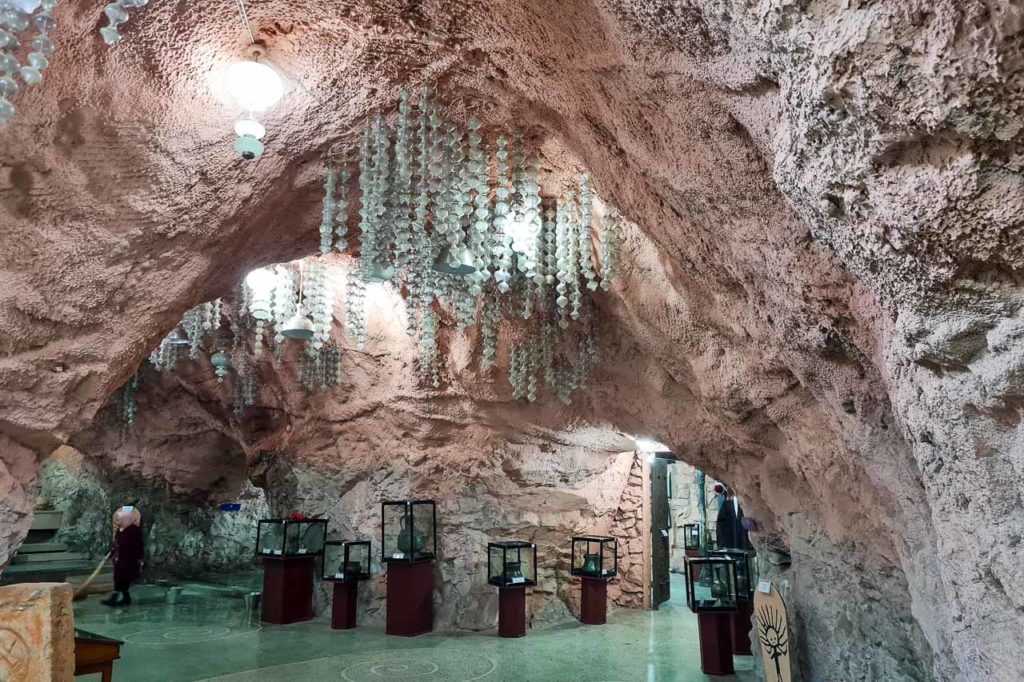
Climbing to Sulaiman Too
Climbing up the mountain takes about half an hour, prepare to get sweaty during the summer period and make sure to have water with you as the water supply in the mountain does not always work (and the water quality might not be the best). Along the way there are more than a dozen different places of worships. Once you have reached the top, next to the Babur’s house, a fantastic Osh city view opens up.
The caves along the way have antique paths that connect them with ancient religious spots and are decorated with petroglyphs of humans, animals or geometric symbols. One can easily spend hours in hills exploring all the hidden sights and caves as not all of them are clearly marked and might require some climbing along steep paths to the higher areas from the marked roads.
Sulaiman-Too Cave Museum
The unique Sulaiman Too cave museum was opened back in Soviet times, in 1978 and has mostly retained its Soviet look with marble interiors. Inside you can see an exhibition of artifacts, craftwork, sculptures and paintings dating back to as far as the 11th century. Museum expositions tell about the history of Sulaiman-Too, the history of the people who inhabited these territories and about the development of religion from Zoroastrianism to the arrival of Islam.
The expositions are housed in the interiors of cave corridors and halls that are sometimes wet after heavy rain. It is a two-level museum and there is a staircase with a handrail between the levels, along which there are stuffed animals and figures of primitive people. The central hall with a window is the largest and most striking one and is filled with ancient petroglyphs on its walls and manholes on the ceiling.
The sacred caves on Mount Sulaiman-Too
Sulaiman-Too is believed to be a sacred mountain which is able to heal from various ailments, including infertility, joint pain and headaches. People lean against the stones, sit and lay on them and even slide down stony slide that has gotten all polished by the people sliding. There are healing crevices for the arms, legs and head. The mountain is believed to provide vitality and blessing, and places of worship combine the roots of pre-Islamic and Islamic beliefs.
The most popular caves to visit are the caves of Tamchy Tamar (Falling drops), Beshik Ene (Mother’s Cradle), Eshen Unkur (Eshen’s cave, spiritual mentor), Kyrk Chilten Unkur (Forty fantastic creatures), Teshik Tash (Leaky Stone) and others. According to historians, each rocky statue is at least 240 million years old.
Tamchy-Tamar (Falling drops)
Tamchy-Tamar is 9 meter deep cave with a narrow entrance. The name came from the droppings of water that hang from the ceiling, and according to the myth, these are the flowing tears of King Suleiman, which can correct weak eyesight.
You can get inside the cave by crawling over the stones polished from centuries of usage. Inside, at the very back of the cave, there is also a book-shaped stone which reminds visitors of the Koran book.
(Picture on the left)
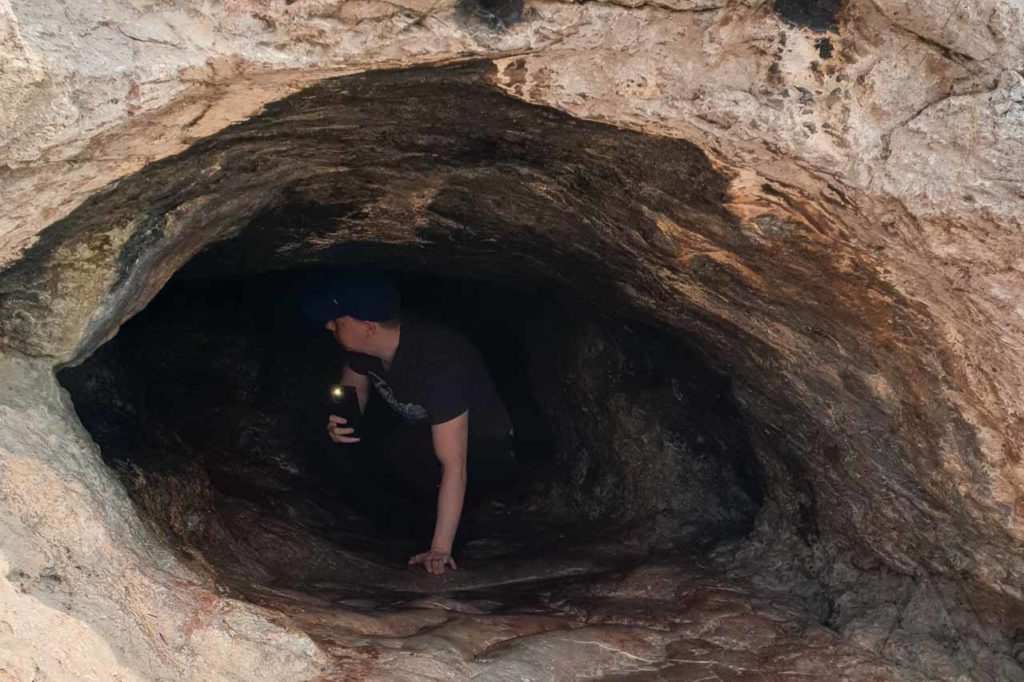
Eshen Unkur (Cave of Eshen)
Cave Eshen Unkur (Cave of Eshen) is famous for its unusual ceiling dome, in which there are three “windows” of a rounded shape. This cave has a large open space inside it and is definately worth a visit.
Kol-Tash
Kol Tash is a stone with a deep hole of an unusual shape. Pilgrims stick their hands into it and pray for health and other benefits for themselves and loved ones.
Kyrk Chilten Unkur (Forty Fantastic Creatures)
The Kyrk Chilten Unkur (Forty Fantastic Creatures) cave is carved into a high sheer cliff and is a permanent place of “pilgrimage” for local youth.
Bel Tash ( Waist Stone)
It is a large stone with a tiny dip in the middle. It is believed that if you slide on this stone three times, you can cure certain diseases of the internal organs or to make a wish. (Picture below)
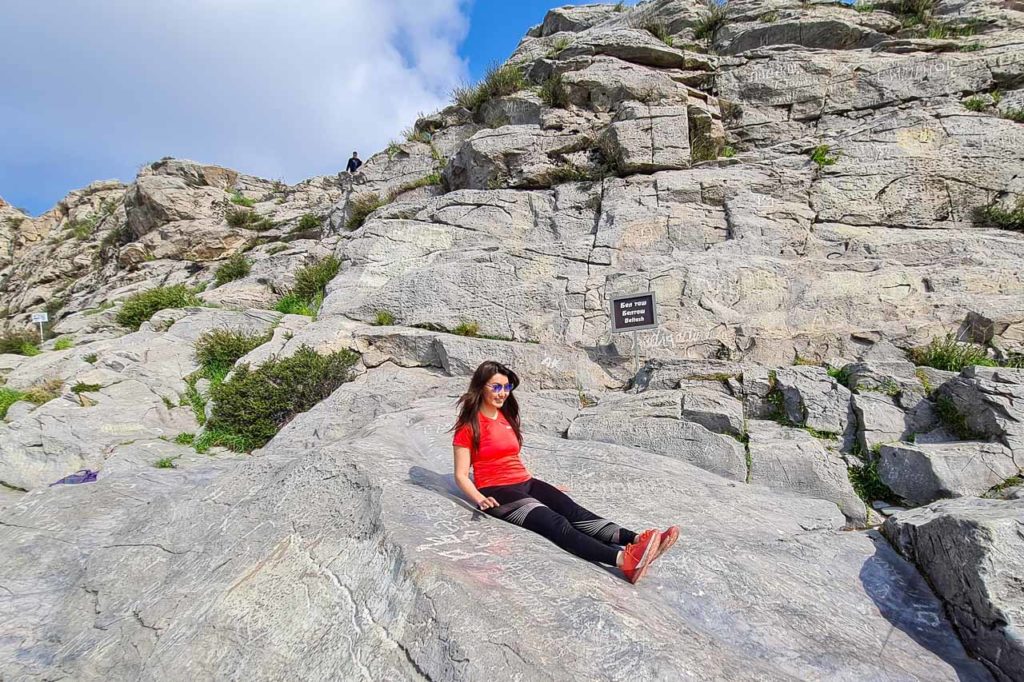
Ene Beshik (Mother's Cradle)
Ene Beshik cave is located just next to the Tamchy-Tamar along the main walking path. It is also called the fertility cave and attracts many women who desire children. You can often see small offerings or remains of burning archa branches in this small “cave”.
Babur's House in Suleiman Too
“House of Babur” (Dom Babura) stands on top of the easternmost peak of Sulaiman too, next to the panorama platform. Babur was the last ruler of the nation created by Amir Timur who was born in Andijan, not far from Osh on the Uzbek side of border. The house was originally built as a place for meditation in 1497 for the purpose of having 40 days retreats.
Babur house has been rebuilt at least twice. It was destroyed by an earthquake in 1853 and later most likely by Soviet anti-religion act supporters. The current house is therefore from the 1990s. Once you have ventured up all the way to the house, you can see people removing their shoes and sitting inside for prayer or meditation.
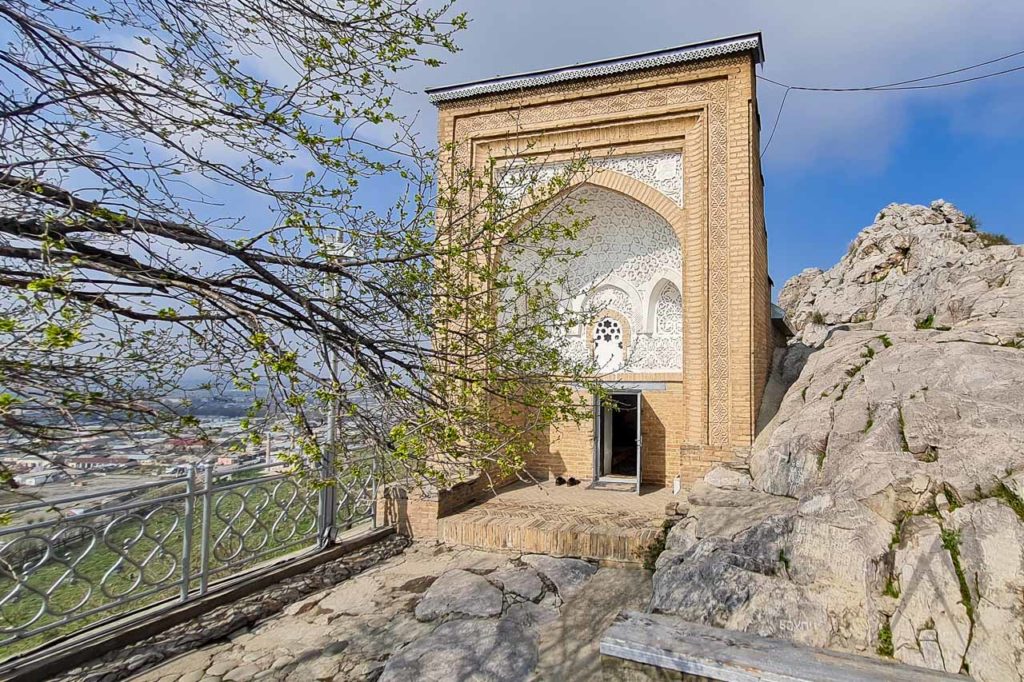
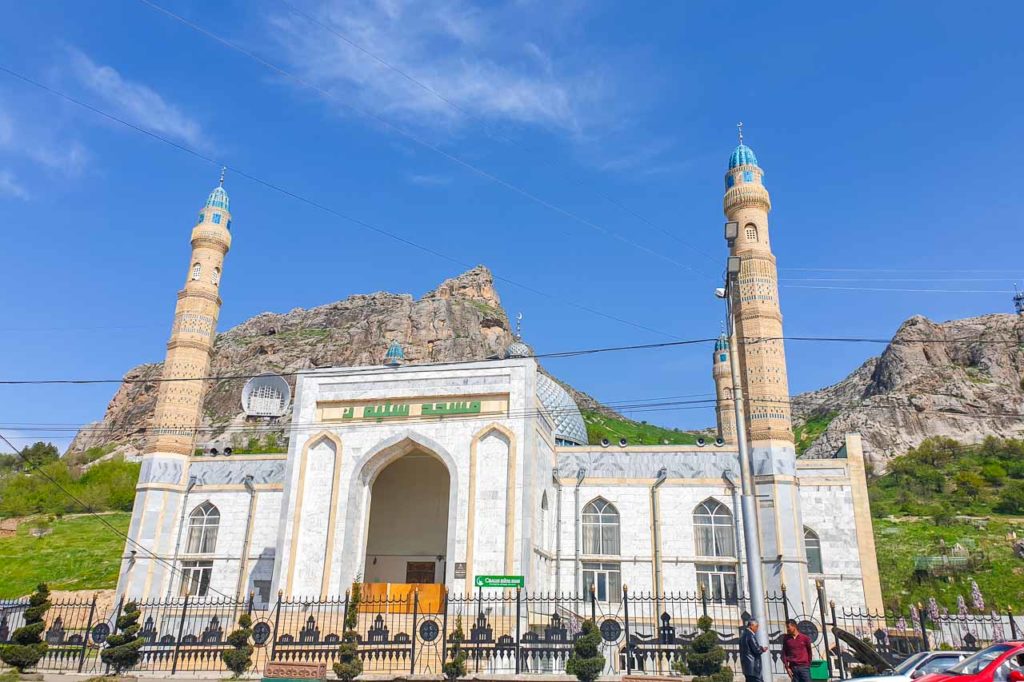
Asaf ibn Burchiya Mausoleum
Tiny Asaf ibn Burchiya Mausoleum stands at the foot of Sulaiman Too, originating from the 11th century, however today it lost its original appearance due to extensive reconstruction. The mausoleum is basically hidden behind the Osh historical museum and hard to reach due to all the fences around it. It can be seen from the road passing by Sulaiman too
Sulaiman too Petroglyphs
Rock drawings of Sulaiman-Too are from a far away period, from around 1500 BC until the 5th century AD. Inside the caves some of them can still be spotted but in the spot where the signs point out to, you won’t find anything as they are covered with the new “art” of the local youth who like to write their names on the rocks.
Sulaiman Too Mosques
Sulaiman Too Mosque
The Sulaiman-Too mosque is located at the Southern side of the mountain and just next to it. It is rather new and one of the largest mosques in the country and is designed for 20 thousand people.
Ravat Abdullaihan Mosque
Small Ravat Abdullakhan Mosque is honors the scholarly Abdullakhan II (1534-1598). He was the most remarkable Shaybanid ruler of the Khanate of Bukhara. This mosque was built in the second half of the 16th century, at the peak of the Khanate’s power. This old and carefully restored mosque is located at the north side of Sulaiman Too, just next to the Osh art museum.
Other Sights near Sulaiman Too & Osh
Page updated 17.4.2021